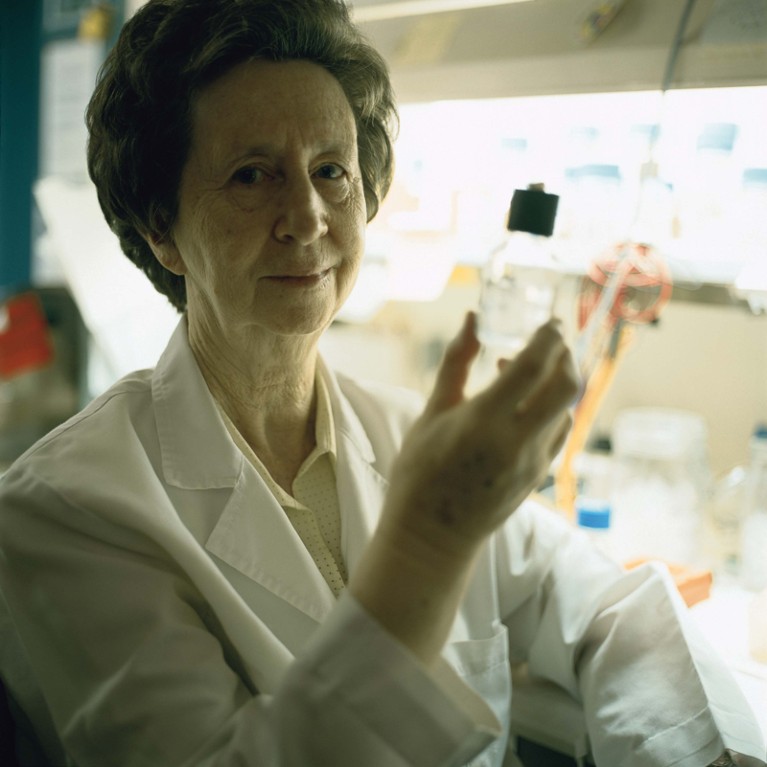
Credit: Francis Tsang/Cover/Getty
Margarita Salas discovered a new mechanism for the replication of DNA. The enzyme she isolated as the key to it has transformed the process of amplifying DNA from very small samples, and is now widely used in forensics, studies of ancient DNA and oncology, as well as in basic research. Her invention, the most profitable patent ever filed by the Spanish National Research Council (CSIC), was recognized earlier this year by a lifetime achievement award from the European Patent Office.
Salas, who died on 7 November, aged 80, was central in bringing modern molecular biology to Spain. Coming of age during the regime of General Francisco Franco, who denied women an equal role in the workplace, she blazed a path for female scientists in her country. She was one of the first winners of the L’Oréal–UNESCO awards for women in science, and in 2008, King Juan Carlos I awarded her the hereditary title of marquise, in recognition of her impact on Spanish society.
Salas was born in Canero, a small village in the Asturias region in the north of Spain, in 1938, in the middle of the Spanish Civil War. Her mother was a schoolteacher; her father, a physician, influenced her interest in science. In 1955, she went to Madrid University to study chemistry. In 1958, on a visit home, she had an inspirational meeting with a distant relative — the biochemist Severo Ochoa, who was awarded a Nobel prize the following year. Fascinated by the emerging discoveries in biochemistry, Salas did a PhD on yeast metabolism in the laboratory of enzymologist Alberto Sols in Madrid. There she met and married the biochemist Eladio Viñuela.
In 1964, Salas and her husband were accepted as postdoctoral fellows in Ochoa’s lab at New York University. The lab was deciphering the mechanisms that transfer genetic information from DNA to protein — replication, transcription and translation. Salas contributed two key pieces of information. First, she found that these mechanisms read the linear DNA message in only one direction. Second, she helped to show that the triplet of RNA nucleotides UAA represents a stop codon, where protein synthesis ends.
Returning to Spain in 1967, Salas and Viñuela set up a lab at the CSIC’s Centre for Biological Research in Madrid. They carried out a systematic genetic analysis of a bacterial virus, the phage ϕ29. Salas discovered that the linear, double-stranded DNA of the virus had a specific protein attached at one end of each strand. She found that this protein acts as a starting point when the viral genome replicates. The mechanism also operates in some mammalian viruses, including those that infect humans, such as adenovirus and hepatitis B virus.
In 1977, Salas made her last academic move — to the recently founded Severo Ochoa Centre for Molecular Biology (CBMSO). The centre brought together most of the leading research groups in molecular biology in Spain in a joint institution of the CSIC and the Autonomous University of Madrid. Here, with her colleague Luis Blanco, Salas isolated the DNA polymerase enzyme from ϕ29 that went on to have such a profound impact on DNA analysis.
Existing methods for DNA amplification, using the polymerase chain reaction (PCR), were slow and prone to errors. Using ϕ29 DNA polymerase proved to be much more efficient: the technique was called multiple displacement amplification. It was highly accurate, able to generate very large DNA fragments, and it worked at a constant temperature in the lab, avoiding the need for shifts in temperature as in PCR. Requiring only very small samples to generate many copies of whole genomes, it proved ideal for forensic analysis, for the identification of mutations in tumours and for genetic analysis of traces of DNA from ancient bones.
Salas and Blanco patented the enzyme, and its commercial licensing has provided an important source of income for the CSIC. Devoted to basic research, Salas was also delighted that her work had led to this important application. She was director of the CBMSO from 1992 to 1994, and continued to work enthusiastically at experiments in her lab until a few weeks before her death.
Salas was a courageous role model. She was the first woman to chair a big biomedical research centre, to be president of the Spanish Biochemistry and Molecular Biology Society, and the first to be elected to several academies.
After receiving awards or when celebrating an anniversary, Margarita, who was a shy person with an austere lifestyle, would invite her many current and former students to dinner at a smart restaurant. Here, she would talk informally, about topics unrelated to science, from Bach’s music to modern Spanish literature, revealing her wide interest in culture.
Margarita conveyed her passion for scientific research and the thrill of discovery to her students, fostering their motivation, creativity, rigour and perseverance. She created a true school, teaching molecular biologists from different places and of different origins how to conduct — and take joy in — research. Many of her trainees are now research leaders.
For generations of Spanish scientists, she was a guiding light. We will miss her, her mentorship and her leadership.

 A celebration of Spain’s exemplary lab leaders
A celebration of Spain’s exemplary lab leaders
 Spain’s biggest-ever science petition decries ‘abandonment’ of research
Spain’s biggest-ever science petition decries ‘abandonment’ of research








